Southwest Michigan field crop update – May 16, 2019
Fields dried out in between rain events over last weekend and this week. Field operations continued, but with more rain on the way, progress will be slowed once again.

This week we saw a truly rare sight in many fields in southwest Michigan this spring: planters working in the fields. Not that it was any too dry, or even in some cases, probably even dry enough, but planting progress was being made in a few of the lighter fields.
Despite the recent surge in activity, planting is lagging far behind for the season. With heavy rainfall expected from a stalled front over the weekend (see the weather outlook below), it is a pretty good bet we will be seeing delays in southwest Michigan through next week. By the end of the third week in May, producers down here will be thinking about shifting hybrids to shorter maturity corns.
Crops
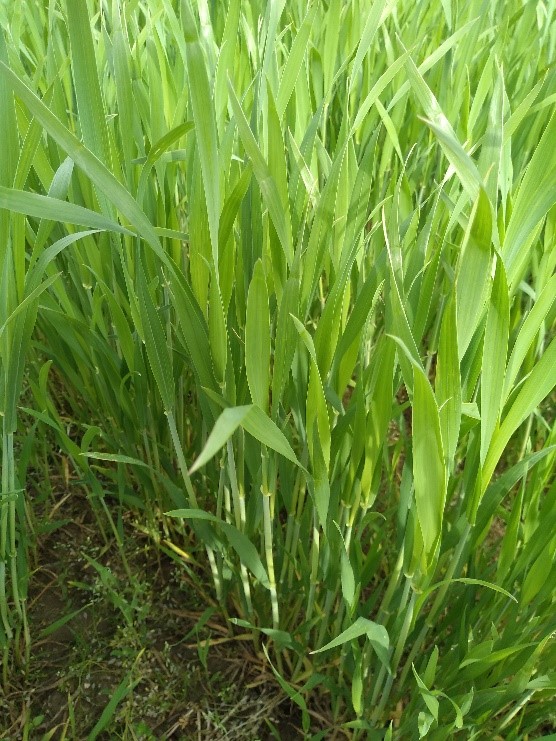
I have seen an uptick in wheat leaf disease issues, particularly powdery mildew, over the last week. Also, there appears to be expansion of yellowing conditions in areas of some fields that are lighter in texture. It is a sure bet that it is not a lack of moisture this year. It could be an indication that nitrogen has begun to move in areas that have received more than 250% of normal rainfall over the last 4 weeks. However, root growth in these areas looks to be much less vigorous than in greener areas of the fields. Advanced wheat is still in Feeke’s growth stage 8, with the ligule of the flag leaf not yet visible. Overall, the crop looks pretty good except in drowned out areas of fields.
There’s not much progress on planting corn yet. According to the latest crop progress report, Michigan was still only 5% planted as of last week, which puts us nearly 30% behind the norm for this time of year. As reported last week, winter annual weeds continue to provide ample feeding opportunities for Asiatic garden beetle white grubs. Planting into fields where the grubs have gotten larger could mean more challenges from these pests in terms of corn root feeding. Check your lighter fields with a shovel to get a feel if grubs can be found in high numbers.
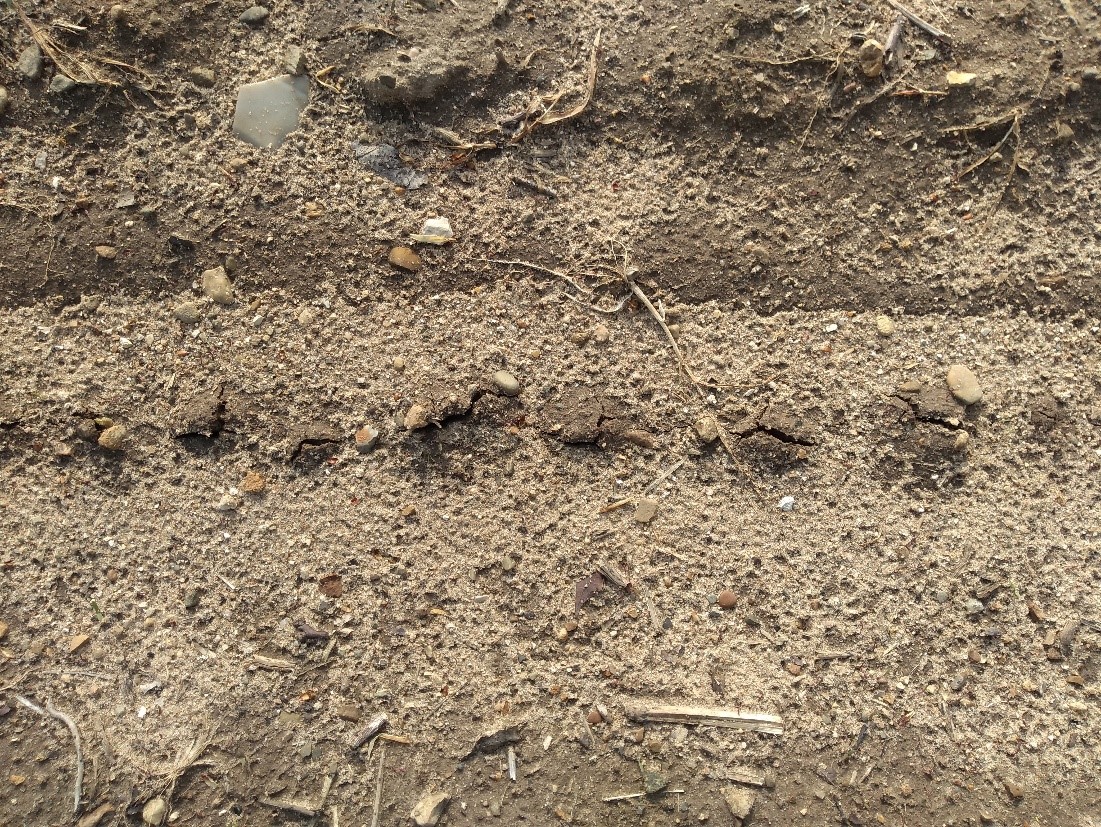
Along with corn, not many soybean fields have emerged yet. Very little progress was made in Michigan during the week of May 7, and only 3% of soybean was planted as of last week compared with 17% planted as an average. Fields planted during the last week of April have been extremely slow to emerge. Since planting, they have been exposed to the meltwater from 5 inches of wet snow (2 days after planting), 3 inches plus of rainfall, and several frosty mornings. We will be watching these plants for signs of chilling injury as they begin to emerge.
Alfalfa continues to grow well. Alfalfa weevil larval feeding activity is there, but not to any significant degree in fields we walked this week. The Lawton Enviroweather station was at 448 for base 41 growing degree days since March 1. With optimal cutting expected to be at 750, first cutting is a ways off. However, with warmer weather in the forecast, we should be at 580 by May 22.
Keep an eye on alfalfa weevil activity. Threshold is 40% tip feeding with harvest more than a week out.
On this week’s Virtual Breakfast session, MSU’s forage and cover crop specialist Kim Cassida talked about winterkill in alfalfa stands. Though most alfalfa stands in our region look very healthy, Kim said she’s had reports of as high as 80% loss in some fields this spring. The main signs are that alfalfa crowns have been heaved well above the soil surface, dead patches, and uneven growth with many plants being late to break dormancy. Contributing factors include cold temperatures, lack of a snow cover, ice sheeting, late fall traffic on wet ground, harvesting in fall during the no-cut window and low soil potassium levels. It’s potassium that helps plants survive cold weather.
When assessing a stand, count the number of stems as it is difficult to count individual plants without digging up roots. A healthy stand will have over 55 stems per square foot, an iffy stand will have 40-55, and less than 40 likely requires immediate action. You should also dig up some roots and slice open stems to assess the level of root rot.
One option to fix the problem would be to overseed the field with grass or clover—the choice of species depends on how long you want the stand to last—but leave the alfalfa. You can’t overseed with alfalfa because the plant secretes chemicals that keep its own seed from germinating to limit competition. The second option is to tear up the alfalfa stand and plant a different forage like red, berseem or crimson clover while you wait for the autotoxic chemicals to work their way out of the soil.
Black cutworm and armyworm
Pheromone trap catches for both black cutworm and true armyworm remain high in many locations across Indiana. Catches in Indiana’s northern tier of counties for black cutworm were still mostly in the single digits last week, but a few locations (St. Joseph, Pulaski and Whitley Counties) had as many as 38. Armyworm counts for Pinney (NW) were still respectable (51), but at NEPAC (NE) the counts continued to increase with 1,222 caught between May 2-8.
Counts from Michigan traps are below in the table. Note: Purdue uses a different type of trap that is more effective, so our numbers won’t be nearly as high as theirs. However, we are looking for peak flight timing, not absolute numbers, in scouting and making management decisions. With flights as high and as early as they have been this year, we recommend scouting in the next two to three weeks in fields that had live vegetation in the last two weeks. With all of the green material in even previously tilled fields, producers need to think about scouting for black cutworm activity after the fields are planted. Reminder: Armyworms tend to lay eggs in fields with dense stands of grass species (for example, wheat, rye, hay, downy brome), while black cutworm prefer fields with dense, low-lying stands of broadleaf plants (dandelion, purple deadnettle, chickweed).
|
3-May |
10-May | ||
|---|---|---|---|
|
Crop | |||
|
Armyworm |
Wheat |
64 |
98 |
|
Wheat |
8 |
11 |
|
|
Grass pasture |
- |
16 |
|
|
Grass pasture |
- |
27 |
|
|
Black Cutworm |
Alfalfa |
0 |
0 |
|
Grass/alfalfa mix |
4 |
15 |
|
|
Pasture w/ dandelion |
1 |
2 |
|
|
Alfalfa |
1 |
0 |
Weather outlook
Cold and wet have obviously been the main story this spring, and last week we were 3-6 degrees colder than normal for this time of year. We are still 7 to 10 days behind on heat units, and soil temperatures have dropped about 5 degrees since the first week of May. Rain events beginning Thursday evening will likely continue in waves throughout the weekend with a half to 1 inch possible. We will have dry but cool conditions on Monday and Tuesday next week but weather fueled by warm Gulf air will return the middle of next week for an additional predicted half to 1 inch. Both the 6-10 and 8-14 day outlook from the National Weather Service call for warmer and wetter than normal conditions.
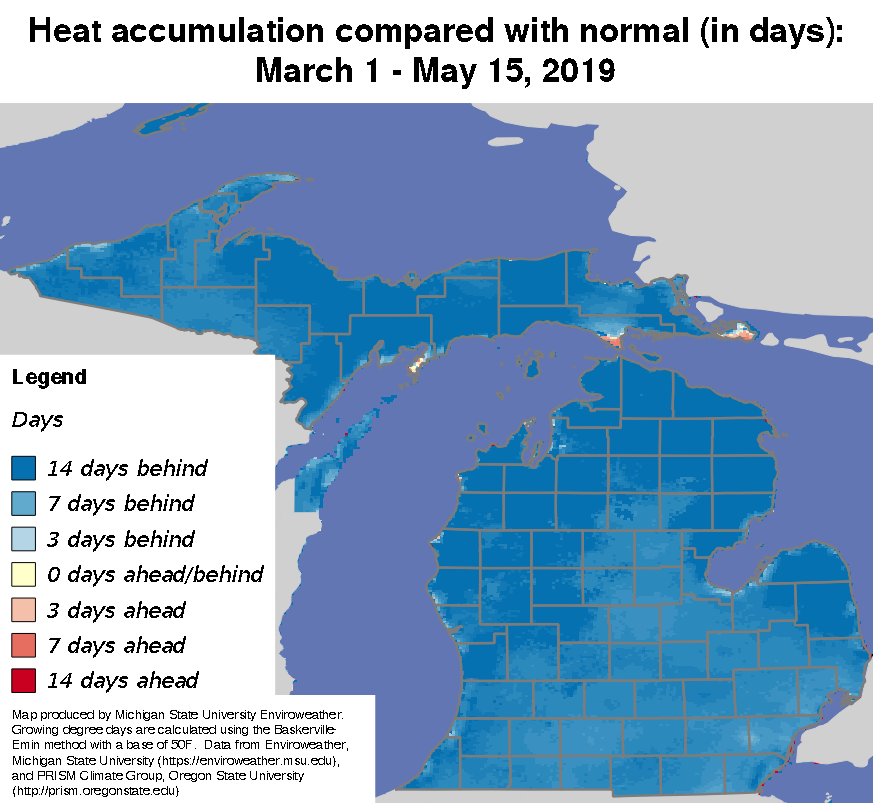
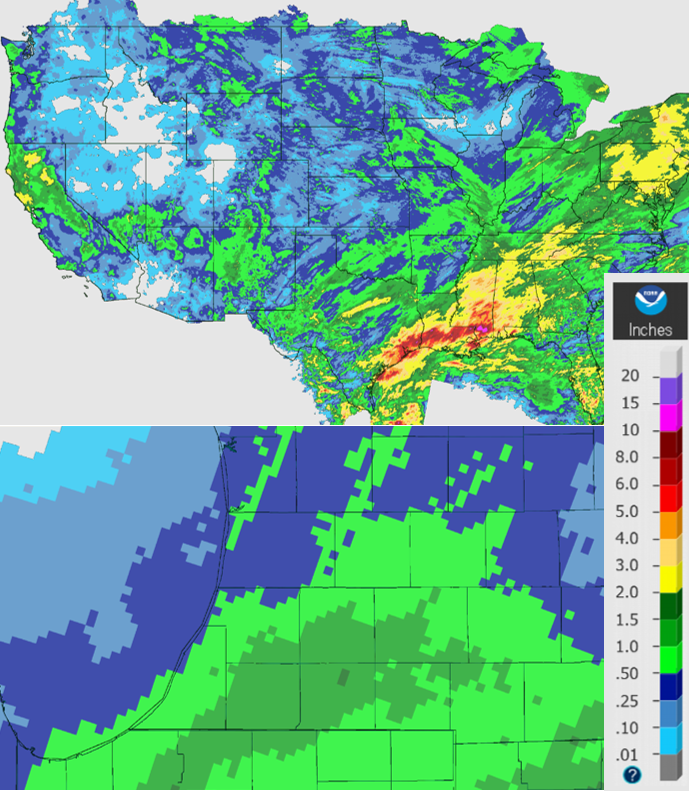
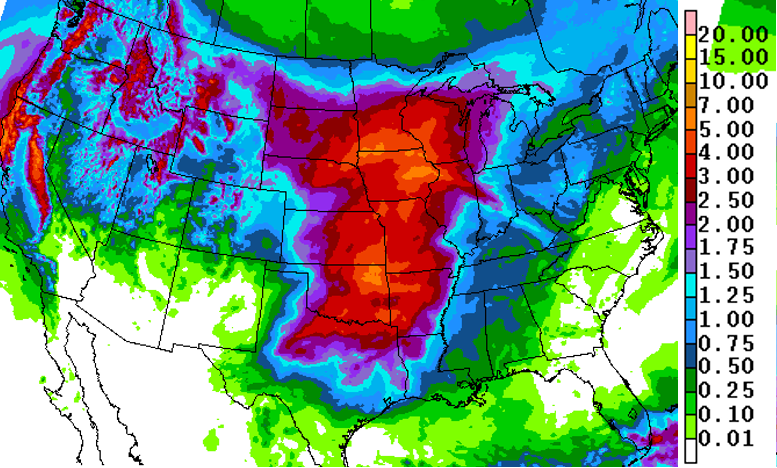
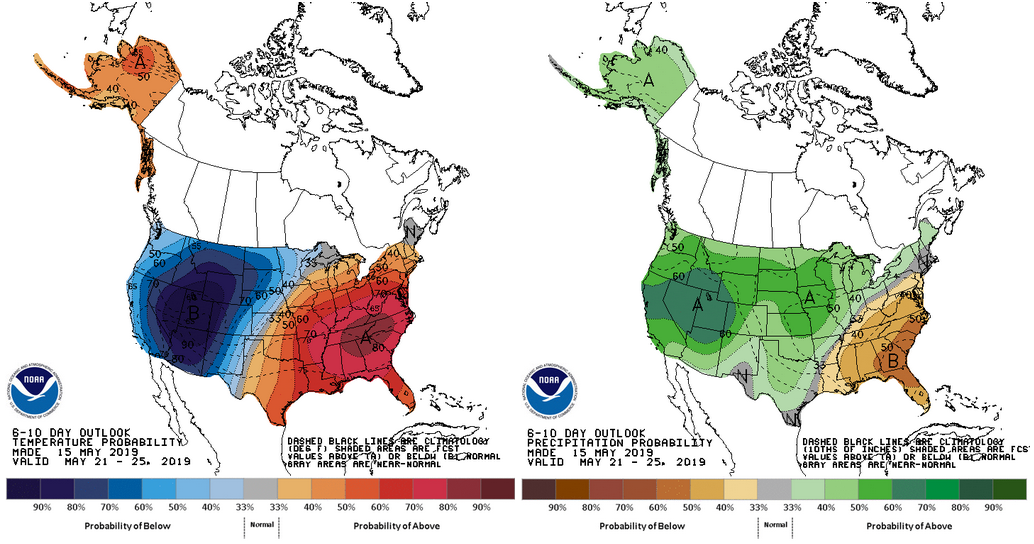
National Weather Service 6-10 day outlook (May 21-25) for temperature (left) and precipitation (right)—the 8-14 day outlook is nearly identical. The darker the color, the greater the chances of warmer and wetter than normal conditions. According to MSU ag climatologist Jeff Andresen, the NWS meteorologists gave these two outlooks a confidence rating of 5 out of a possible 5, a rare occurrence.



 Print
Print Email
Email